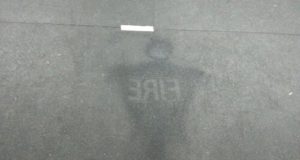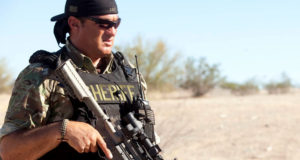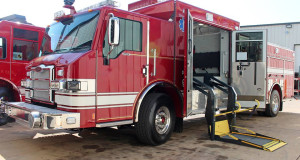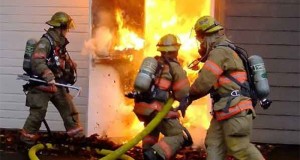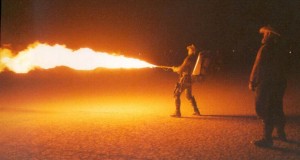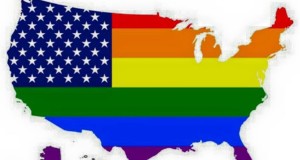INVESTIGATIVE REPORT BY: Captain Dom Chaos – Cannonball Run Fire Dept.
The Fire service has been deeply rooted in tradition, for decades fire apparatus has been red adorned with gold lettering, in the 1970’s some departments experimented with “Lime Green” which was more of a safety yellow, was said to improve the recognition of fire apparatus in traffic thus preventing accidents and injuries. This trend sparked the great red/yellow debate.
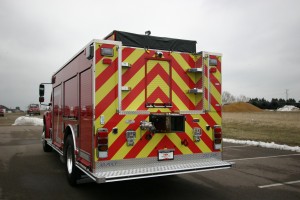 In 2009 the NFPA technical committee passed the revised edition of NFPA 1901 standard for Automotive Fire apparatus, as one section of this standard it requires the rear of fire apparatus and the front bumper to be covered in reflective alternating red and yellow chevrons (inverted V pattern).
In 2009 the NFPA technical committee passed the revised edition of NFPA 1901 standard for Automotive Fire apparatus, as one section of this standard it requires the rear of fire apparatus and the front bumper to be covered in reflective alternating red and yellow chevrons (inverted V pattern).
“Call the Cops” has received exclusive inside information from the NFPA technical committee meetings. While framed as a safety improvement the chevrons were actually implemented to solve the red/yellow debate without sparking additional controversy.
The Chevron idea came from 1700 suggestions that NFPA 1901 state all fire apparatus shall be Red and 1350 suggestions for the contrary position for all apparatus to be Yellow. The meeting scribe suggested over a lunch break, why not just make apparatus plaid, checker board, or bumble bee striped?
After several test patterns it was decided on diagonal lines, since it made fire apparatus appear to be moving slower than it actually was in an inverted V pattern, the chevron requirement was born. Since firefighters are so resistive to change it was known that there would be great resistance to completely painting all trucks in this pattern. Once this was decided the committee also looked at the materials and noticed the fire services willingness to embrace the reflective sign striping making their trucks “prettier” in the dark when a light is shined on them. It was decided that this would also soften the acceptance by the fire service.
Subsequently, technical committee members opted for a slower rollout than initially planned and to blame the change on safety and only start with both ends of the apparatus working toward the middle. First step acceptance of flat forward and rear surfaces, then other surfaces which face traffic while apparatus is forward facing, finally all surfaces which could face traffic.
An anonymous NFPA technical committee member was quoted as saying, “if we frame this in safety we will get the unions to buy in instantly, if me make it shiny and bright the volunteers will love it, and at that point we can tell the Chiefs what to do and how their trucks will look and there’s not a damn thing they can do because it’s NFPA.” Our source inside NFPA also stated that while the time frame spelled out above may be shifted forward or back depending on pushback from the fire service or equipment manufacturers.
 Call the Cops The 27th Most Trusted Site in Public Safety
Call the Cops The 27th Most Trusted Site in Public Safety
